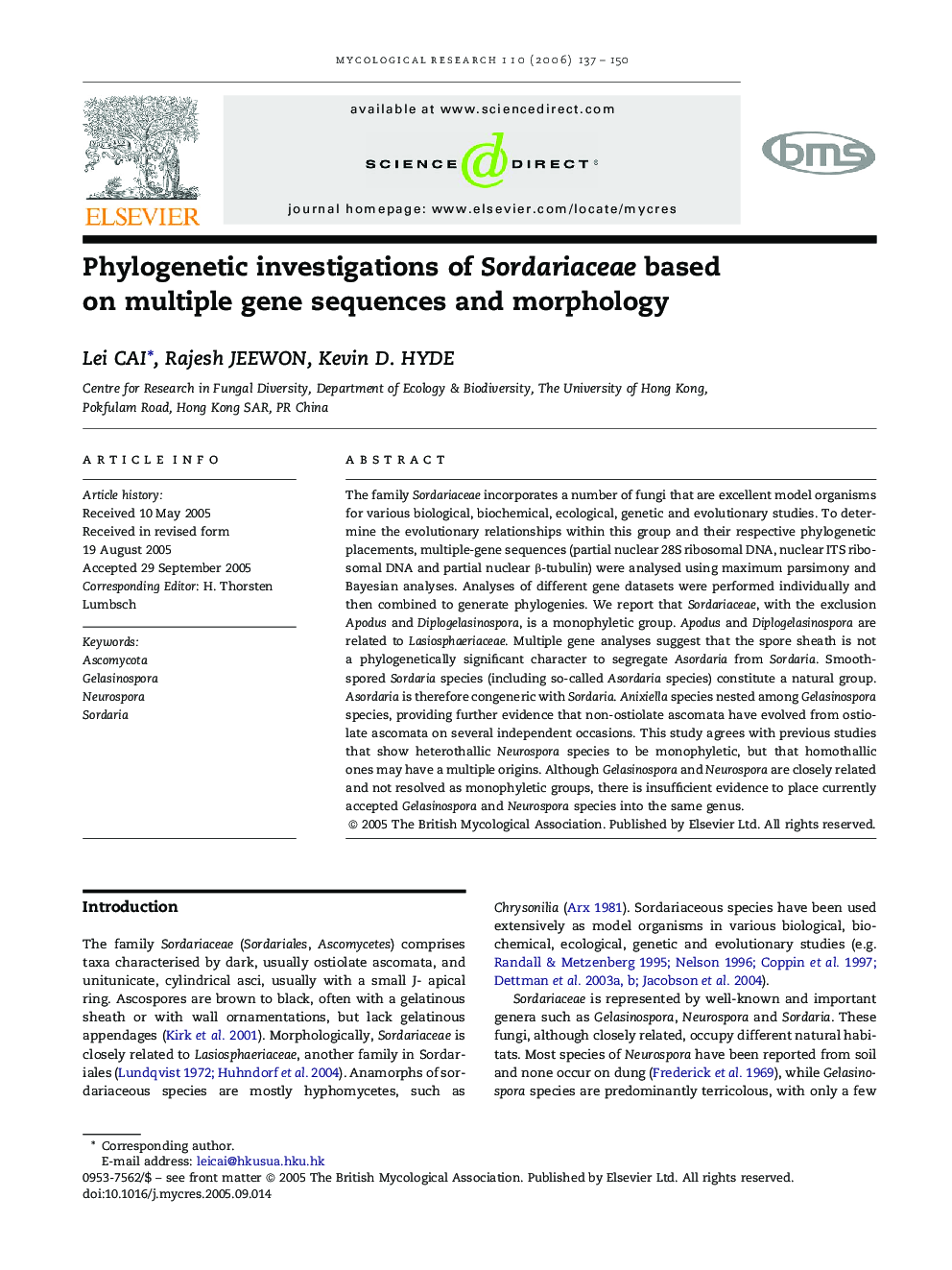| Article ID | Journal | Published Year | Pages | File Type |
|---|---|---|---|---|
| 4358211 | Mycological Research | 2006 | 14 Pages |
The family Sordariaceae incorporates a number of fungi that are excellent model organisms for various biological, biochemical, ecological, genetic and evolutionary studies. To determine the evolutionary relationships within this group and their respective phylogenetic placements, multiple-gene sequences (partial nuclear 28S ribosomal DNA, nuclear ITS ribosomal DNA and partial nuclear β-tubulin) were analysed using maximum parsimony and Bayesian analyses. Analyses of different gene datasets were performed individually and then combined to generate phylogenies. We report that Sordariaceae, with the exclusion Apodus and Diplogelasinospora, is a monophyletic group. Apodus and Diplogelasinospora are related to Lasiosphaeriaceae. Multiple gene analyses suggest that the spore sheath is not a phylogenetically significant character to segregate Asordaria from Sordaria. Smooth-spored Sordaria species (including so-called Asordaria species) constitute a natural group. Asordaria is therefore congeneric with Sordaria. Anixiella species nested among Gelasinospora species, providing further evidence that non-ostiolate ascomata have evolved from ostiolate ascomata on several independent occasions. This study agrees with previous studies that show heterothallic Neurospora species to be monophyletic, but that homothallic ones may have a multiple origins. Although Gelasinospora and Neurospora are closely related and not resolved as monophyletic groups, there is insufficient evidence to place currently accepted Gelasinospora and Neurospora species into the same genus.
